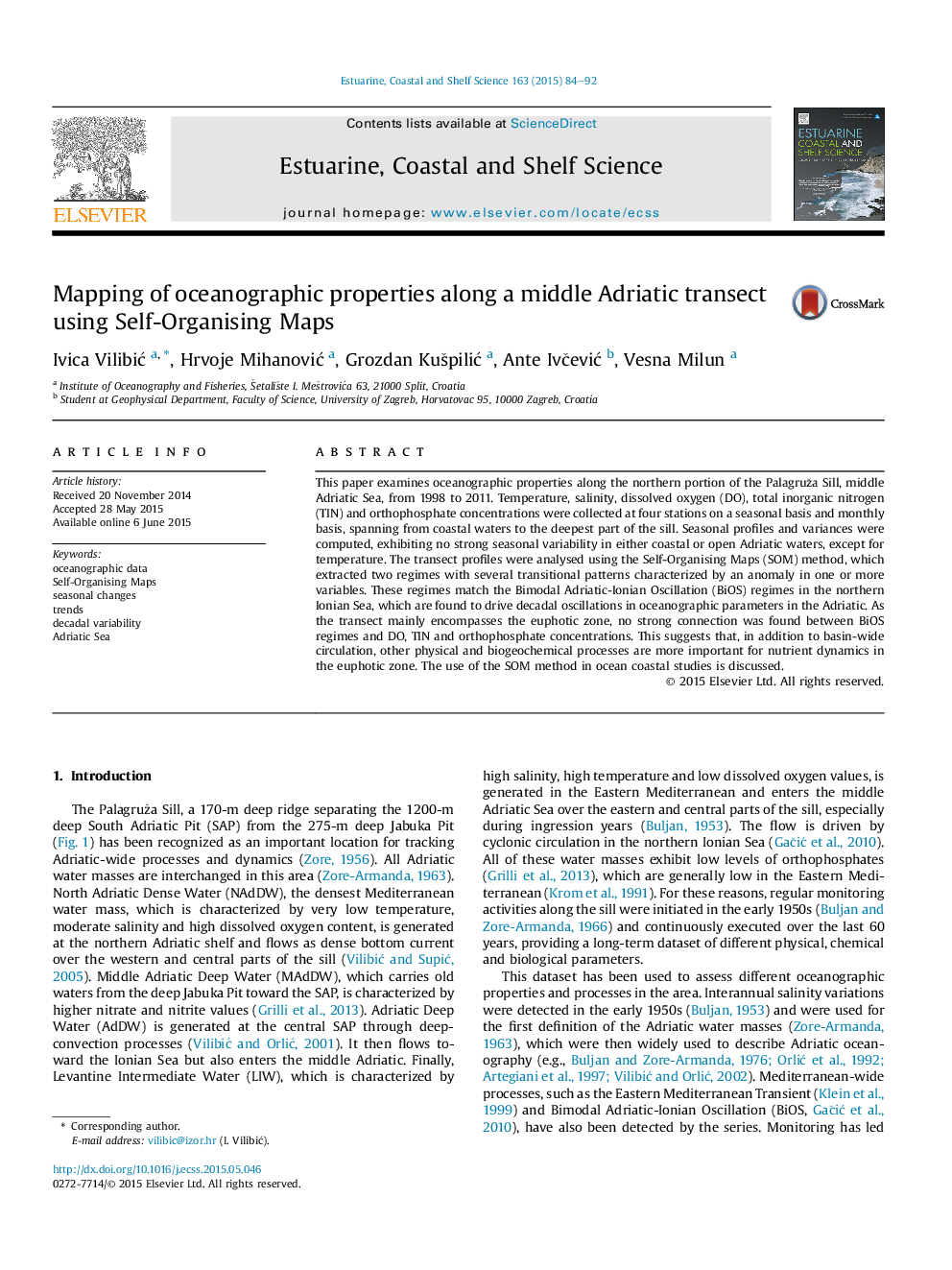| Article ID | Journal | Published Year | Pages | File Type |
|---|---|---|---|---|
| 4539397 | Estuarine, Coastal and Shelf Science | 2015 | 9 Pages |
•Self-Organizing Maps method have been applied to the physical and chemical data.•Decadal oscillations dominated in characteristic patterns.•No connection has been found between decedal variability and chemical parameters.•The use of SOM method in ocean coastal studies is discussed.
This paper examines oceanographic properties along the northern portion of the Palagruža Sill, middle Adriatic Sea, from 1998 to 2011. Temperature, salinity, dissolved oxygen (DO), total inorganic nitrogen (TIN) and orthophosphate concentrations were collected at four stations on a seasonal basis and monthly basis, spanning from coastal waters to the deepest part of the sill. Seasonal profiles and variances were computed, exhibiting no strong seasonal variability in either coastal or open Adriatic waters, except for temperature. The transect profiles were analysed using the Self-Organising Maps (SOM) method, which extracted two regimes with several transitional patterns characterized by an anomaly in one or more variables. These regimes match the Bimodal Adriatic-Ionian Oscillation (BiOS) regimes in the northern Ionian Sea, which are found to drive decadal oscillations in oceanographic parameters in the Adriatic. As the transect mainly encompasses the euphotic zone, no strong connection was found between BiOS regimes and DO, TIN and orthophosphate concentrations. This suggests that, in addition to basin-wide circulation, other physical and biogeochemical processes are more important for nutrient dynamics in the euphotic zone. The use of the SOM method in ocean coastal studies is discussed.
